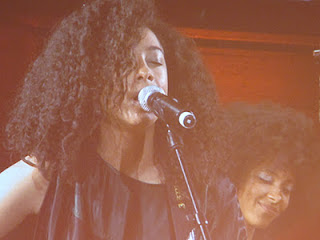The jazz legend, who was appointed a UNESCO Goodwill Ambassador last July, says he wants to use his art for the good of humanity.
“In recent years I have become conscious of a different perception of myself in this world which goes beyond being a musician,” Hancock said prior to a special concert in Paris
“That might sound crazy. But I now see myself in terms of my potential value as a human being. In fact I’m more interested in the real value of being a musician … which is to serve humanity,” he told the audience, who had come to see him perform with musical friends Corinne Bailey Rae, Esperanza Spalding, Manu Katché and Stephen Brown.
“That might sound crazy. But I now see myself in terms of my potential value as a human being. In fact I’m more interested in the real value of being a musician … which is to serve humanity,” he told the audience, who had come to see him perform with musical friends Corinne Bailey Rae, Esperanza Spalding, Manu Katché and Stephen Brown.
Hancock’s projects include establishing an international day of jazz, to “promote a month of learning and the celebration of jazz in 195 countries around the world”. (UNESCO has approved this proposal, and the first International Jazz Day will be celebrated globally on April 30, with its official kick-off at UNESCO headquarters on April 27.)
The day will introduce jazz education and appreciation worldwide “as a way to encourage intercultural understanding, dialogue and respect, especially among youth”, the award-winning pianist and composer said.
His concert in Paris India Cambodia Angkor temples and the United Kingdom Tower of London
 |
| Esperanza Spalding performs with Hancock |
Hancock has proposed that the locations where blues and jazz began be inscribed on the World Heritage List too: “from farms in the Mississippi Delta to New Orleans Chicago New York
UNESCO experts say that the protection and promotion of World Heritage sites can create jobs and give an economic boost to countries, and they have designated sustainable development as the theme of the anniversary celebrations taking place globally throughout 2012.
“The World Heritage sites have indeed contributed to sustainable and economic development but this is little known,” Kishore Rao, director of UNESCO’s World Heritage Centre, told SWAN in an interview.
“People think that these are just iconic sites, but they generate jobs, they generate revenue and they promote tourism,” he added.
Despite the inclusion on the World Heritage List of a growing number of sites from less developed regions of the world and the progress made in strengthening the Convention’s policies and practices, “much remains to be done to ensure a full representation on the List of the world’s outstanding natural and cultural diversity”, UNESCO says.
 |
| Corinne Bailey Rae and Esperanza Spalding |
For his part, Hancock said that when he recently visited some of the sites, he’d had an “eye-opening, incredibly inspiring and uplifting experience”.
“In Cambodia
He added that the places were also significant for “passing down the history of a people” and for “providing a record” of traditions that might otherwise have been lost because of wars and other calamities.
Hancock’s speech was rousing, but it was his music that hundreds of Parisian residents and UNESCO staffers had come to hear. And he didn’t disappoint. He played fresh and funky versions of his famous compositions “Cantaloupe Island
That song, which featured Bailey Rae and Spalding doing a clapping, “patty cake” routine, drew the loudest applause of the evening. The two young women, looking like sisters on stage, showed that jazz, art and culture are alive and well, despite what Hancock called this “rapidly changing world”. - A.M.
